My final selection of images for the Batterie Moltke Photoshoot:
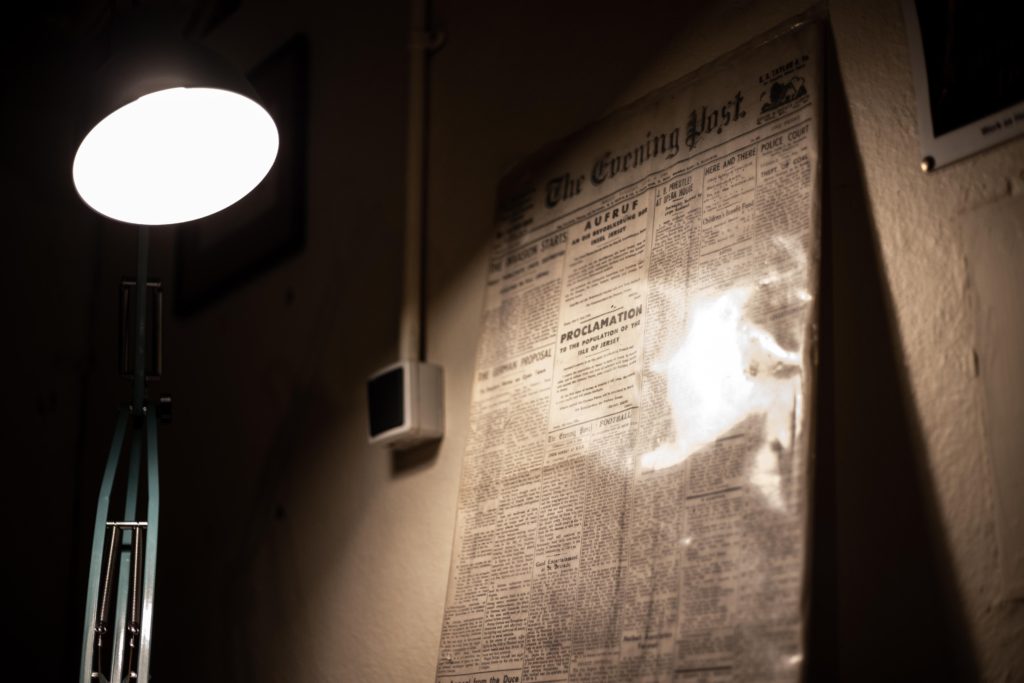
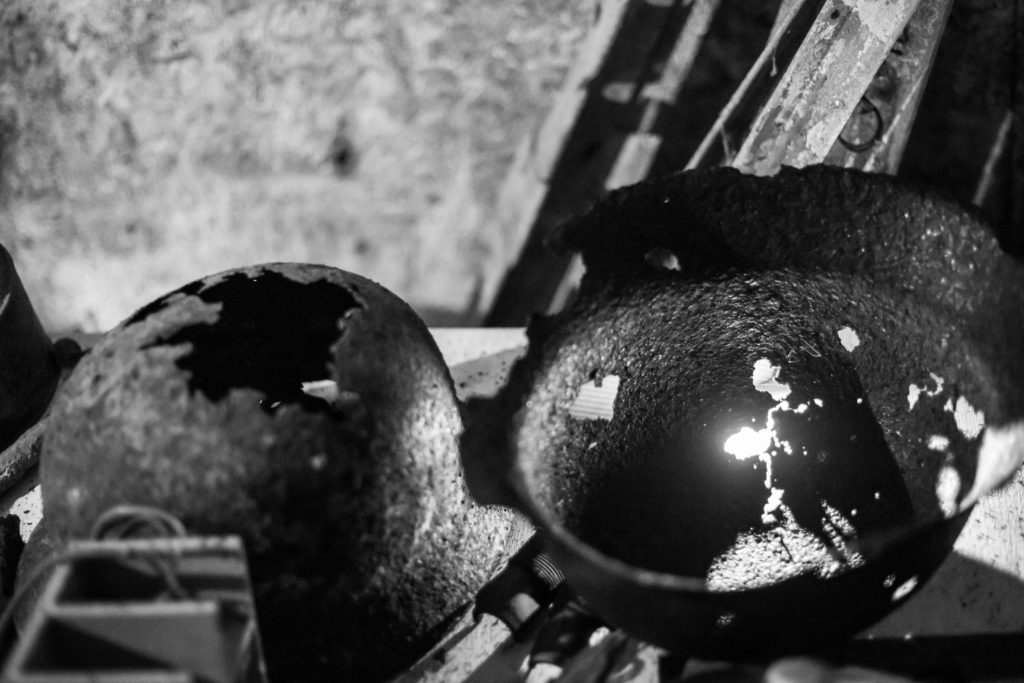

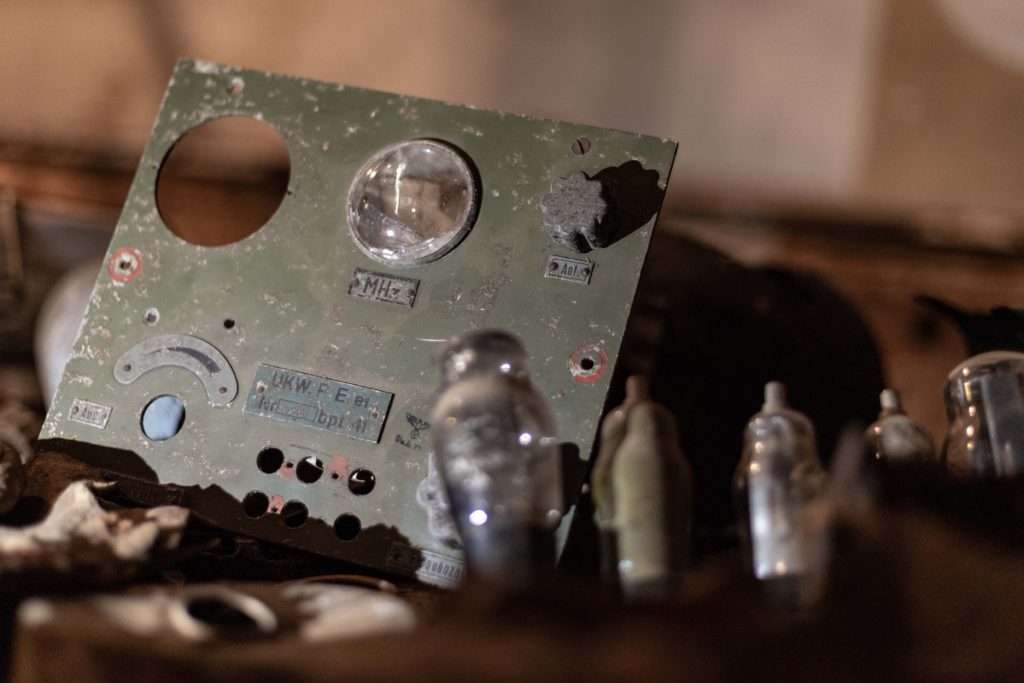

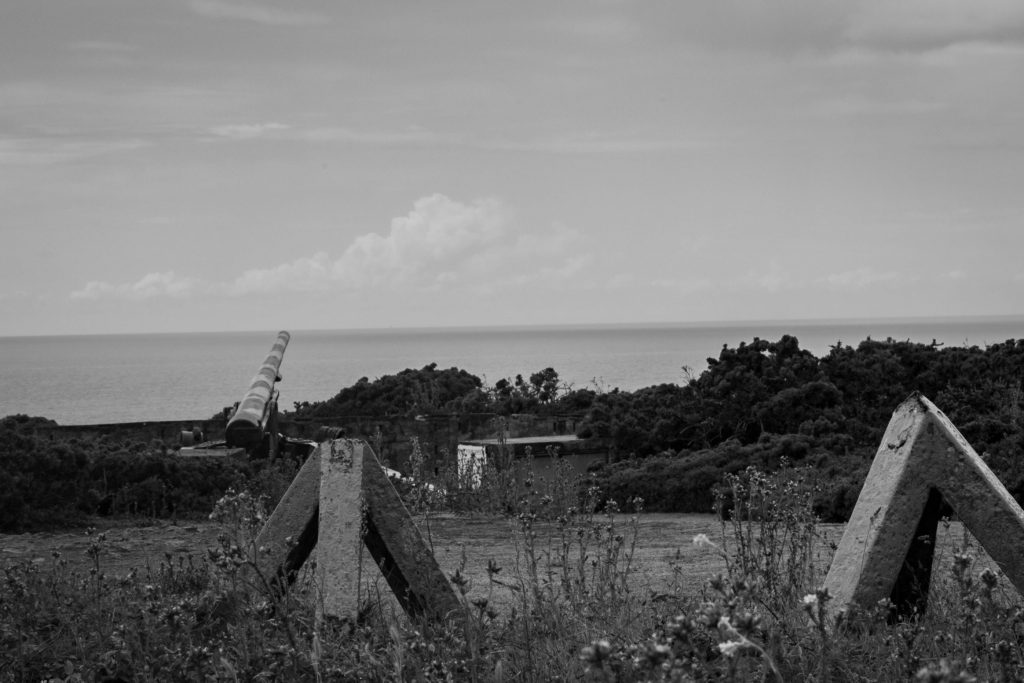

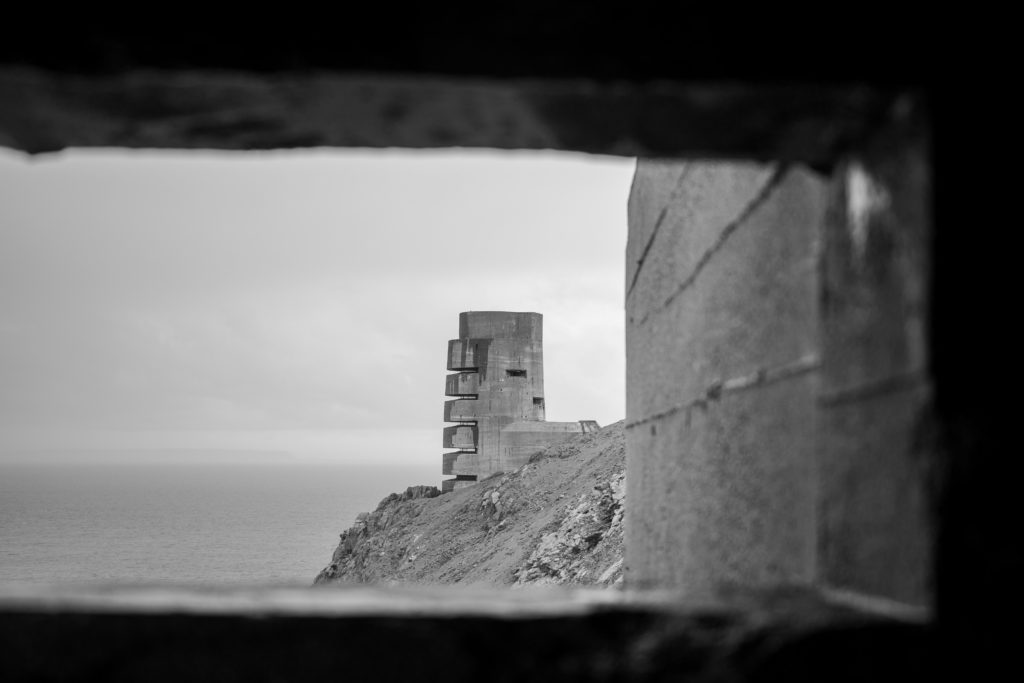
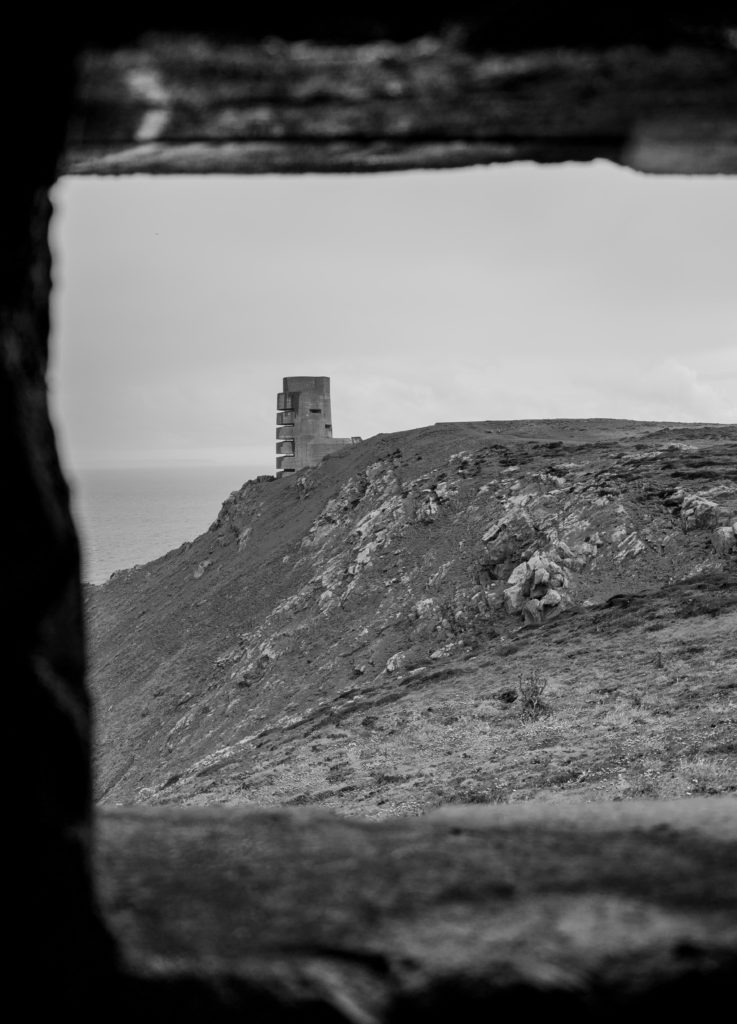




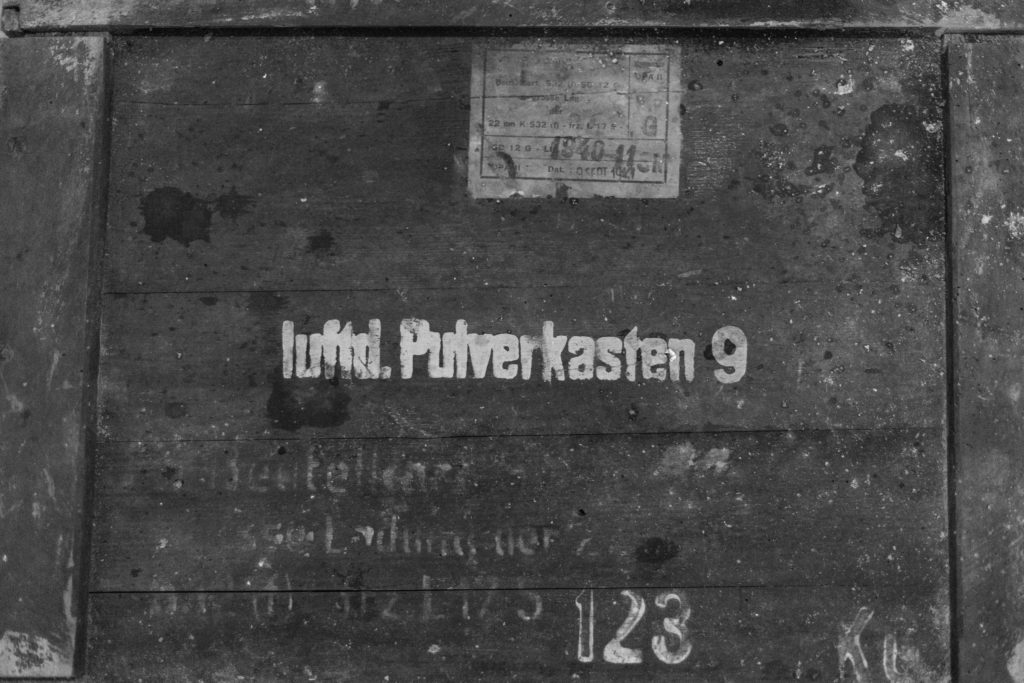
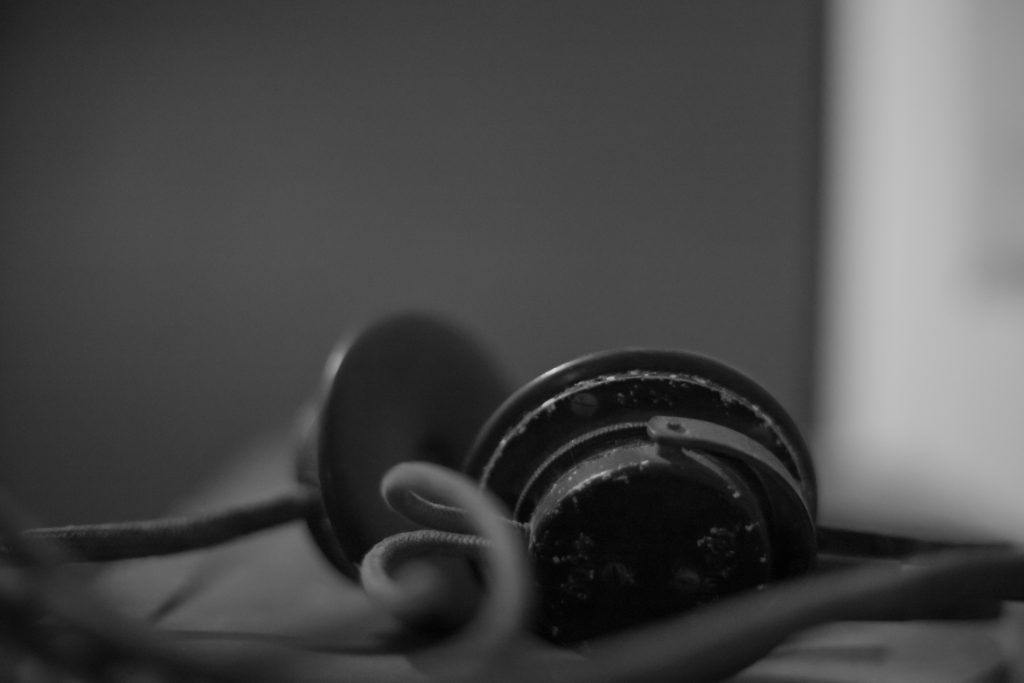
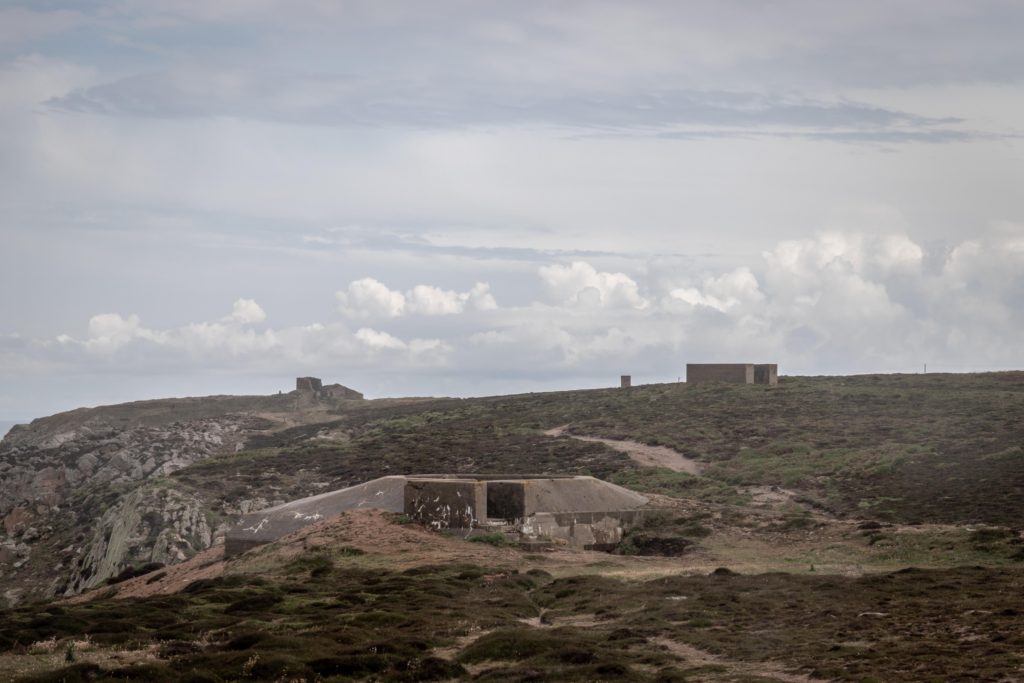
My final selection of images for the Batterie Moltke Photoshoot:
















What is Adobe Lightroom? – Adobe Lightroom is a software developed by Adobe Systems for Windows, MacBooks, ISO etc. It is used for photo manipulation and organization, as well as it allowing importing, saving, viewing, tagging, editing and sharing numbers of digital images.
In order to get a larger understanding of Adobe Lightroom i have decided to carry out an experiment where i make small edits to images which is going to help me get used to the software.
When exploring Adobe Light room i decided to use my previous bunker images which have been taken as part of my world war project. The first step included importing the images from the media drive into light room which was successfully done.
To import my images i created a collection set called ‘ Bunker Archaeology’ i then transferred my images from the media drive into this folder which allowed me to be able to access the images. I then pressed the ‘import’ button which is shown below (bottom left hand side).
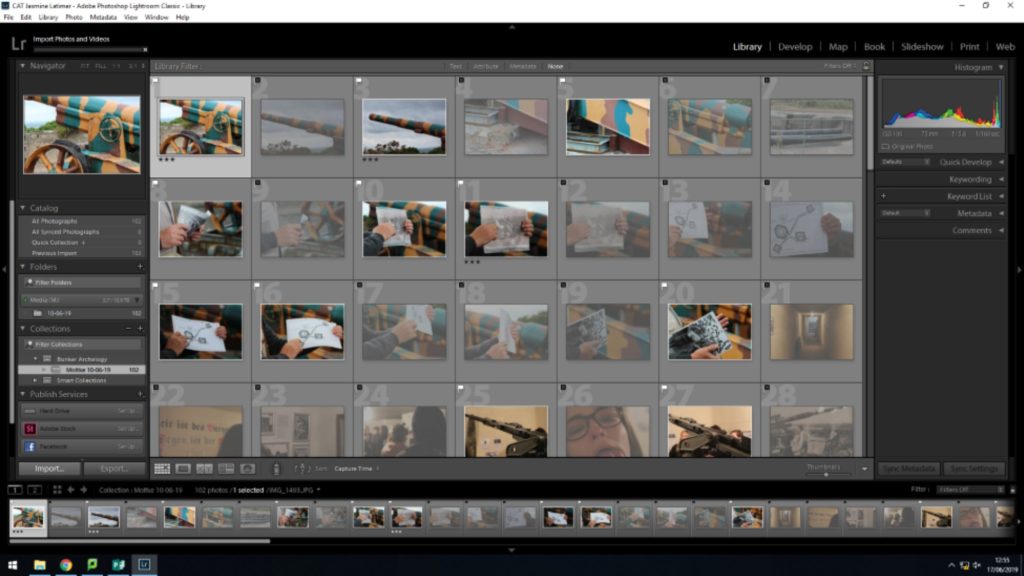
After this step i then pressed the media button, into the year 12 button, jasmine latimer, year 13, occupation of jersey, bunker archaeology, 10/06/19. After this my images were then imported. (shown below)
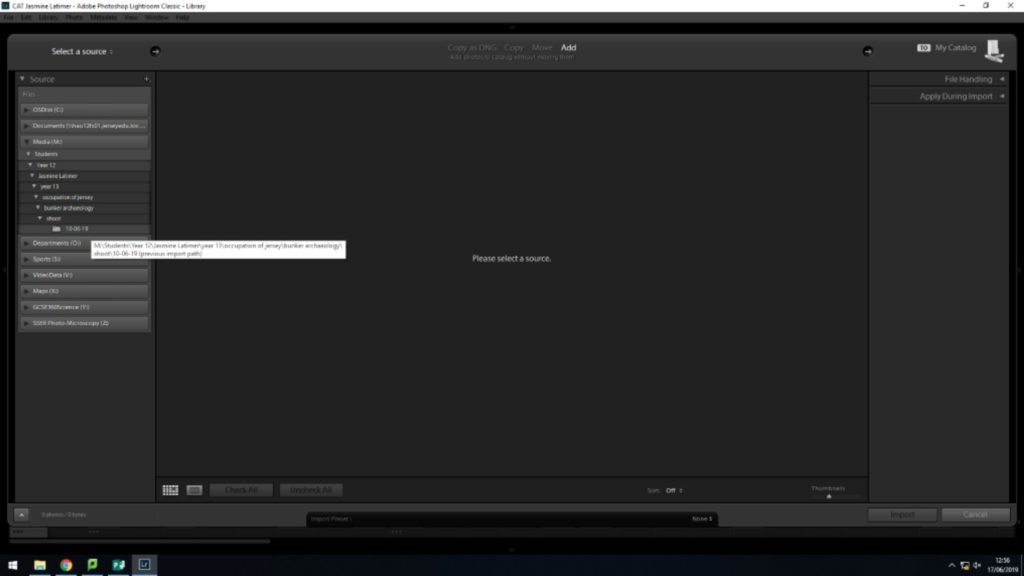
I then flagged my images of the best outcomes in order to explore and edit the best images. However, i decided to thin the images more so by singling them by ratings and colour coding them.

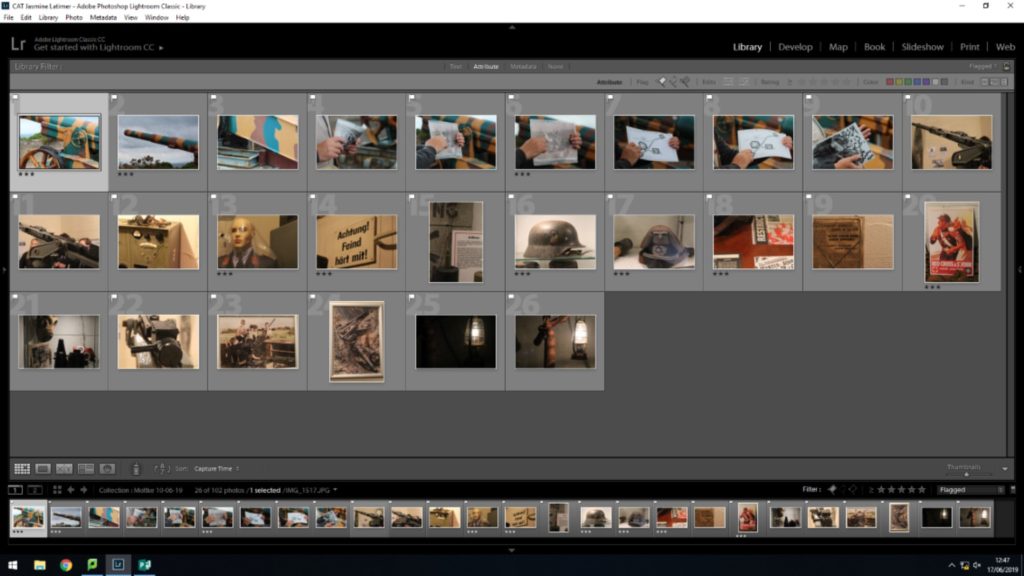
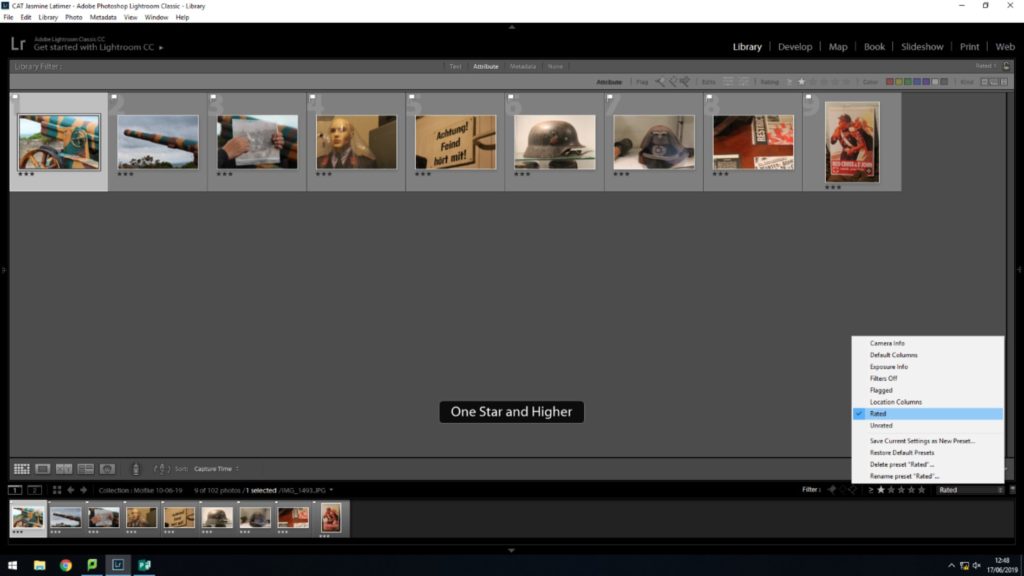
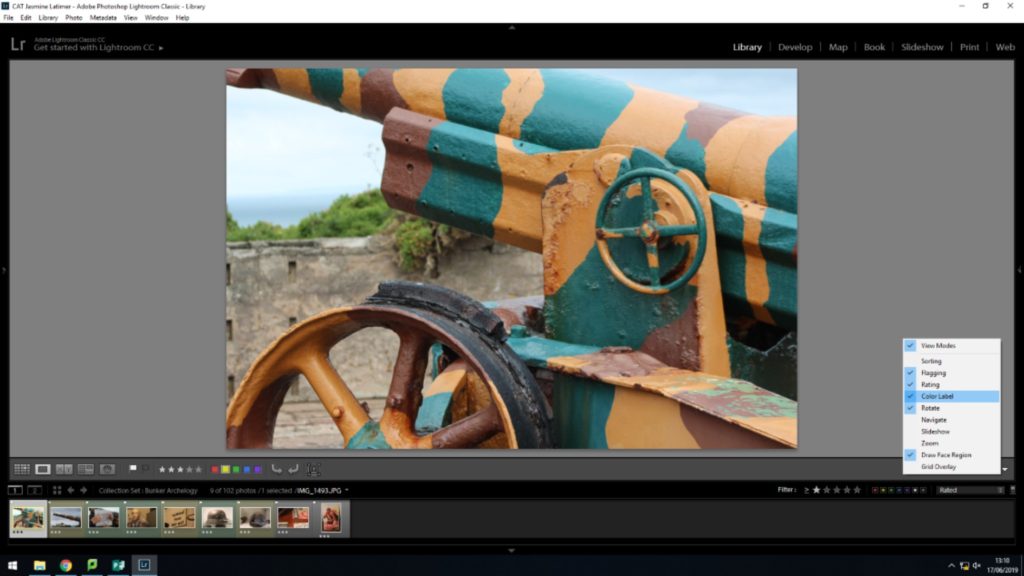

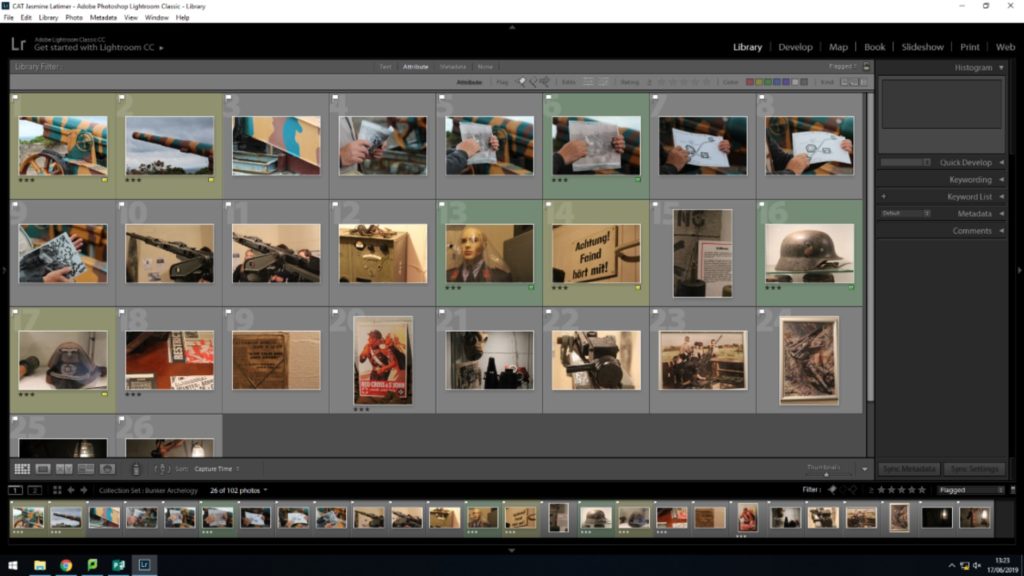
After this step i then started to edit my images using light room. This started with pressing the ‘develop’ button which took me to the editing page. I then set the white balance to ‘auto’ as shown below in order to set a bases to the editing stage. This was then followed with other small edits.
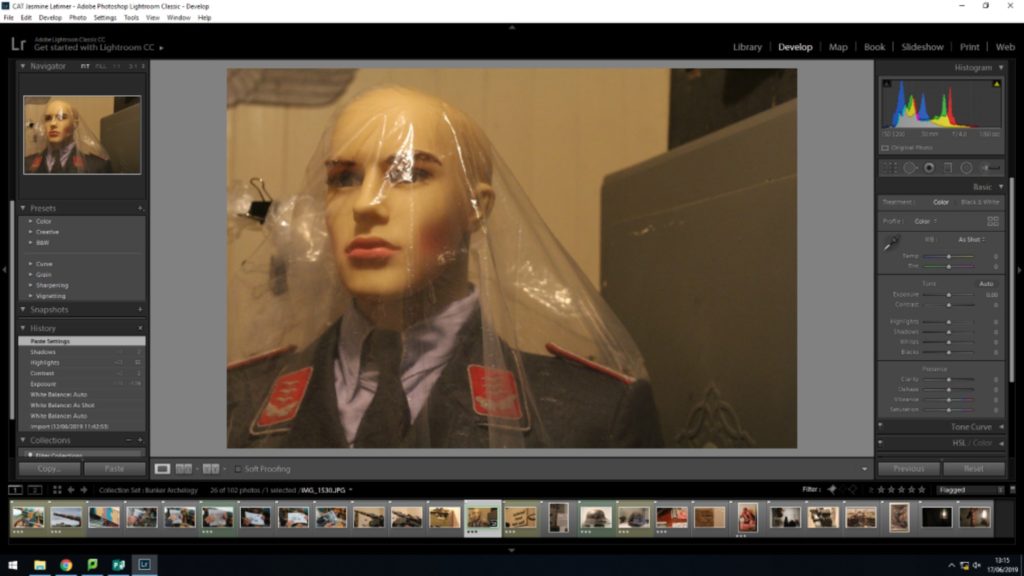
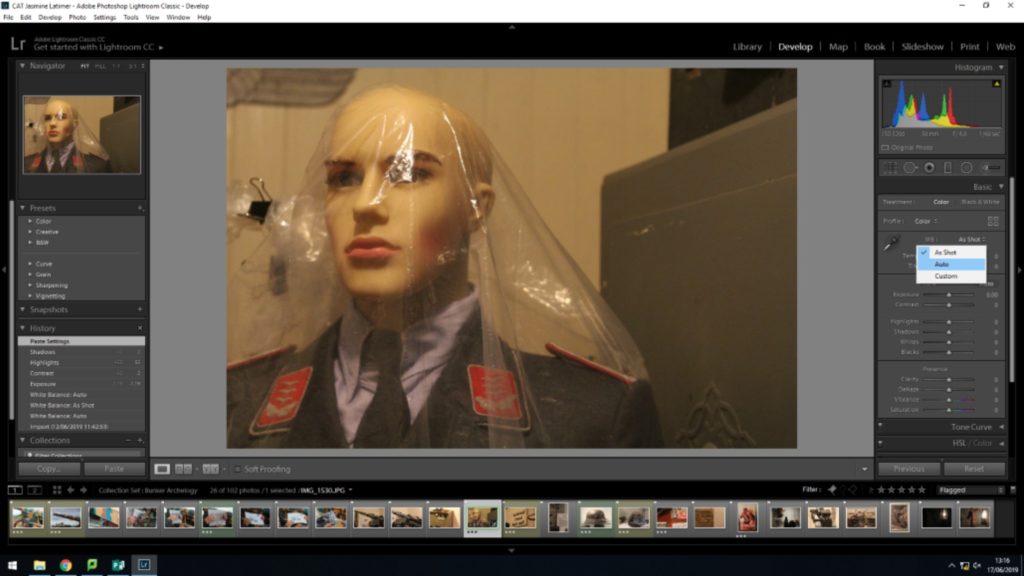
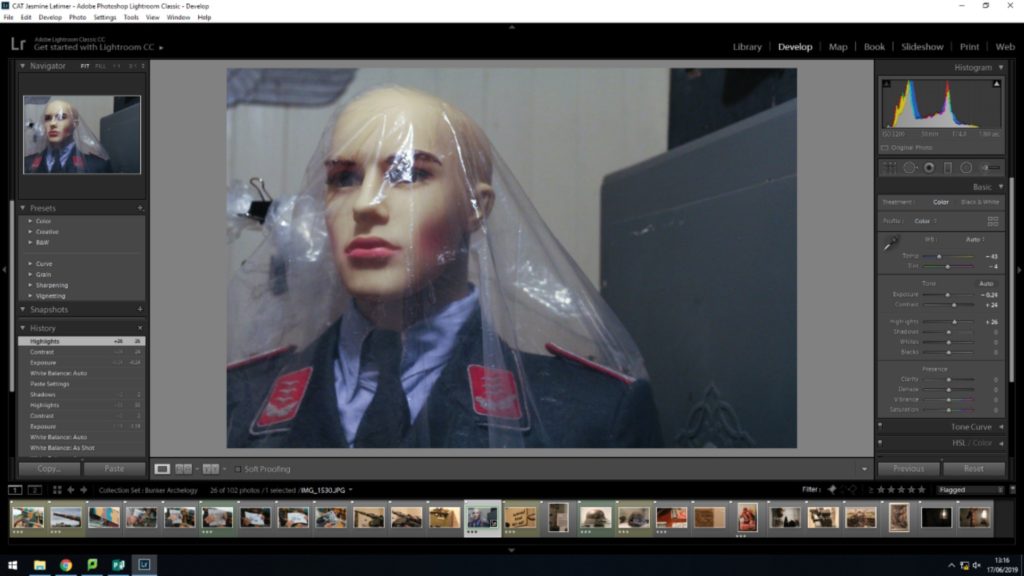
This editing step was then repeated with my other colour coded images. (results shown on next blog post)
During the Second World War the Occupation of the Channel Islands lasted five years. After the German forces took St Malo on 22 June, and France surrendered, Jersey was in range of enemy guns, and when Britain decided that defending the islands was impracticable, and compulsory evacuation was ruled out, it was up to people to make their own decisions. About 10,000 decided to evacuate to the British mainland, leaving about 40,000 in Jersey when the occupying force arrived on 1 July. The island was demilitarized, with British troops withdrawn, the island’s lieutenant-governor recalled and the Island Militia stood down, although the unit volunteered as one to go to England to join the main home forces.
Life under occupation – The German Occupation of Jersey began one week after the British government had demilitarized the island fearing for the safety of civilians should there be any conflict. The code name for this was “Operation Green Arrow” and the initial German Air Force reconnaissance flights mistake civilian farming lorries for troop carriers. On the 28th of June , the German Air Force, not knowing of the demilitarization, bomb and machine gun multiple sites on the island. The attacks killed ten people and wound many more. A few days later on the 1 of July 1940 General Richthofen, The Commander of the German Air Forces in Normandy, dropped an ultimatum from the air demanding the immediate surrender of the island. White flags and crosses were placed in prominent positions, as stipulated by the Germans, and later that day Jersey was occupied by air-borne troops under the command of Hauptmann Gussek.
Food shortages – Shopping hours were reduced as goods became scarce. Food shortages on Jersey were finally relieved by the arrival of the Red Cross ship SS Vega, bringing food parcels to Jersey. Before then, substitutes had been used to replace everyday foods, with seawater replacing salt, for instance, and a mixture of parsnip and sugar beet replacing tea. During the autumn of 1944, fuel supplies were almost gone, leaving no gas, occasional electricity, and very little road fuel. Medical supplies were almost non-existent; and most people were without fuel. A Red Cross relief ship, the S S Vega, arrived in Jersey on 30 December with food parcels, and cases of salt, soap and medical supplies. The visits of the Red Cross ship S S Vega proved a lifeline to the starving islanders.
Jersey with no defenses- Hitler ordered the conversion of Jersey into an impregnable fortress. Thousands of slave workers from countries like Russia, Spain, France, Poland, and Algeria built hundreds of bunkers, anti-tank walls, railway systems, as well as many tunnel complexes. In late 1943 the Tunnel Complex Ho8 (now known as the Jersey War Tunnels) in St. Lawrence was converted from an artillery workshop and barracks to an emergency casualty clearing station able to cope with up to 500 patients.. All of the fortifications built around the island were part of Hitler’s “Atlantic Wall”. Today, traces of Jersey’s defenses and wartime occupations can be discovered across the island, especially in St. Ouen’s Bay.
Victoria on the horizon- By 7 May 1945, the German army had surrendered and the end of the war in Europe was announced. During the week leading up to 6 May islanders had been hearing reports of Hitler’s fall in Berlin by way of their hidden radios. In spite of the fact that the island was still officially under occupation, rumors began circulating of an imminent end to the war in Europe. In June 1944, the Normandy landings marked the initiation of ‘Operation Overlord’, the invasion of northwest Europe by the Allied forces. By 7 May 1945, the Germany army had surrendered and the end of the war in Europe was announced. During the week leading up to 6 May islanders had been hearing reports of Hitler’s fall in Berlin by way of their hidden radios. In spite of the fact that the island was still officially under occupation, rumors began circulating of an imminent end to the war in Europe. Culminating on the 8 May, the Allied military powers had been busy coordinating the necessary steps, behind the scenes, to recover the Channel Islands from their occupation. On 3 May a British Military operation ‘Nestegg’, with the objective of liberating the Channel Islands, was set in motion when a coordinated group of British Army units, collectively known as ‘Force 135’, were called to ‘Stand To’.
Churchill’s speech- At 3.00pm Winston Churchill crackled onto the airwaves to give, perhaps, the most famous speech of his career. The Prime Minister’s words announced the end to the war in Europe and the “unconditional surrender of all German land, sea and air forces in Europe”. When, amidst great cheers across the island, he uttered the words, “our dear Channel Islands are also to be freed today”. Island-wide flags and decorations sprang up. From a balcony overlooking the Royal Square, Bailiff Coutanche gave an impassioned address and proceed with an emotional rendition of the national anthem. Possessions, forbidden under the occupation, miraculously reappeared, adding to the celebrations. Parties continued throughout the rest of the day and long after the King’s speech at 9.00pm, with several bonfire and firework displays taking place.
liberation day – At 7.15am on 9 May, on the quarter deck of HMS Bulldog, Second-in-Command for Guernsey General Siegfried Heine signed the Instrument of Surrender on behalf of the German Command of the Channel Islands, effecting their capitulation. On completion of this, General Heine was then ordered to “immediately cause all German flags and ensigns now flying in the Channel Islands to be lowered”. At Midday an overjoyed Bailiff Coutanche accompanied a German delegation led by the island Commander, General Major Rudolf Wulf, aboard HMS Beagle anchored in St. Aubin’s bay, where the separate surrender of Jersey was to take place. Arriving at the same time in St. Helier’s harbour was a small naval inspection party sent to report on the health of the islanders, who were promptly overwhelmed by an enthusiastic crowd delighted at seeing their first liberators landing on Jersey soil.
Archives act as a place for the preservation of significant historical and cultural artifacts. The Photographic Archive of the Société Jersiaise contains over 100,000 images dating from the mid-1840s to the present day. Archives however are not just physical, they can be a digital store of documents, texts and photographs. these can be public or private. The jersey archive also contains historical artists to help people for contextual reference when inquiring about a certain photo or book that has gained attention.
Digital copies of historical photographs, documents, and audio recordings are the best way to both share and preserve historical items. Handling and displaying the original items cause wear and degradation. However, the items cannot be shared if they are protected from all degradation. Good digital copies allow unlimited sharing while also preserving the original items. Archives significantly improve the way in which historical artifacts and photos can be preserved. Photos are handled in a way which means very little damage is done to them therefore meaning that their quality is retained. They are intended on being used for various different purposes for decades to come. “The goal of Preservation Programs is to ensure that the records of our government will be appropriately preserved so they will be available for use.”
The ultimate purpose of preserving photos and creating archives is to share it with others. Future generations are able to look back at these archives and access information about their ancestors and gain insight about various historical events. Image collections deepen understanding of specific objects of art and the careers of individual artists as they also provide the means for a comparative approach to the study of artists’ works, national schools and period styles. Photo archives build their collections and gather documentation for the works of art they record through purchases, gifts and photography campaigns. Information about ownership, condition, attribution, and subject identification is recorded at the time of acquisition and is frequently updated.
IPhotography acts as a double role in the sense that it provides visual imagery and narrative of real events in history. It taps into the area of photography called Narrative photography. Narrative photography is the idea that photographs can be used to tell a story. Allen Feldman stated that “the event is not what happens. The event is that which can be narrated”. Because photography captures single discreet moments, and narrative as described by Jerome Bruner is irreducibly temporal, it might seem photography cannot actually represent narrative structure. We are able to look back at this narrative and reconstruct the past with the use of photo archives and facilities such as the Société Jersiaise.
The development of digital technology has provided archives and institutions with the opportunity to expand the accessibility of photographs beyond the walls of their homes. Although digital images are not substitutes for the originals, institutions are slowly acknowledging that they do provide an entry, an introduction, to the images. That introduction may be all a researcher needs.Digitizing photographs has also been the catalyst for some institutions to put their physical collections into deep storage, where they are no longer readily accessible, or to inaccessible or even destroy them. This raises urgent questions about the value of the original photographs as artifacts or evidence in their own right.On a much more positive note, digitization also offers the potential to conduct research that could never be done before. For instance, image recognition/matching software is being developed that would allow users to identify particular visual characteristics in a photograph and then search for and retrieve photographs of other works that share those characteristics. Having a physical representation of an image is what I strive for in my own personal archive. The sensation of handling a real life object instead of a digitized version is evidence of our connection to traditional forms of photography and media in general.
I will aim to incorporate the use of archives in my own personal study as I believe this will not only enrich my work but also provide a sense of legitimacy to it. Société Jersiaise focuses on the photographic preservation of the island which I believe is key to allowing us to remember about the tragic times of the occupation and WW2. I will be sourcing images from
Société Jersiaise, who provide digital copies of their archives at a small fee and using these as inspiration for my own personal photography or incorporating them in techniques such as photo collages.
In conclusion the trip to the archives has taught me a lot about the importance of treasuring the islands history and having facilities such as
Société Jersiaise. It has changed my perception of photo archives in the sense that I now understand the amount of work and sheer man power it takes to effectively preserve photographs for decades to come. It has also made me gain great respect for the foundation as they are preserving the islands history for millennia to come through photographic evidence. It is a painstaking and delicate job working with images that are hundreds of years old. It was a worth while experience which has taught me a lot not only about the evolution of photography in Jersey and the various artists who worked and resided here but also about the real life events during the occupation and the types of photos which were captured at the times.
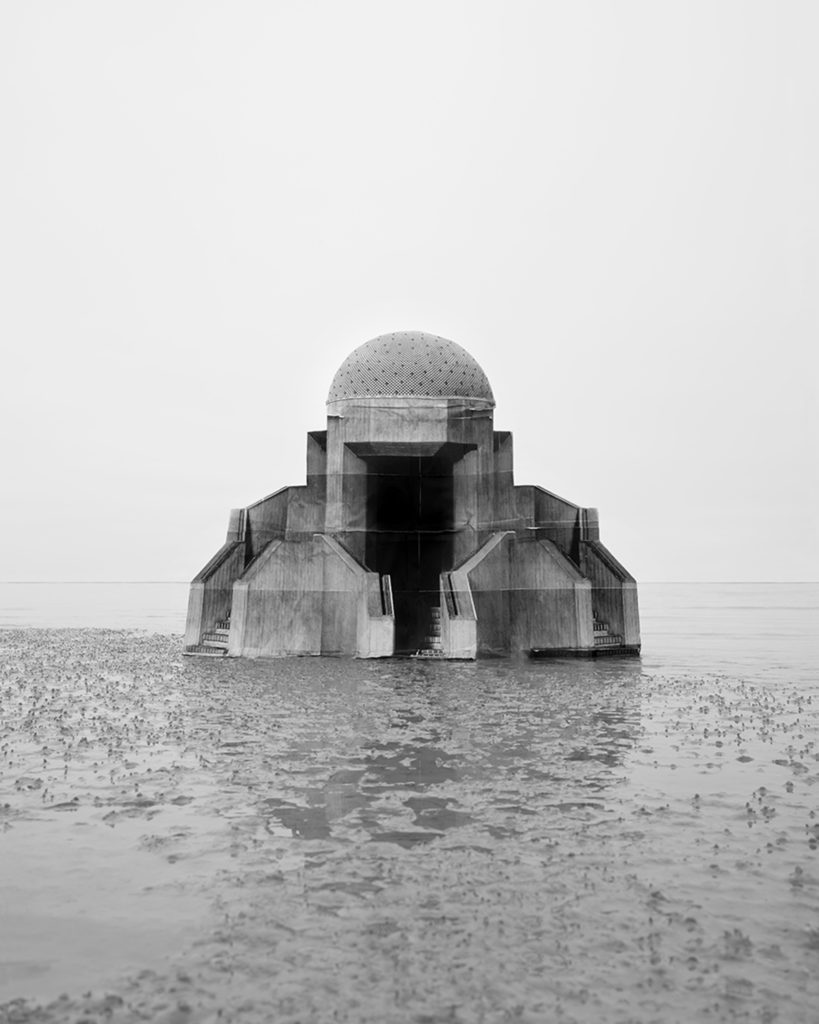
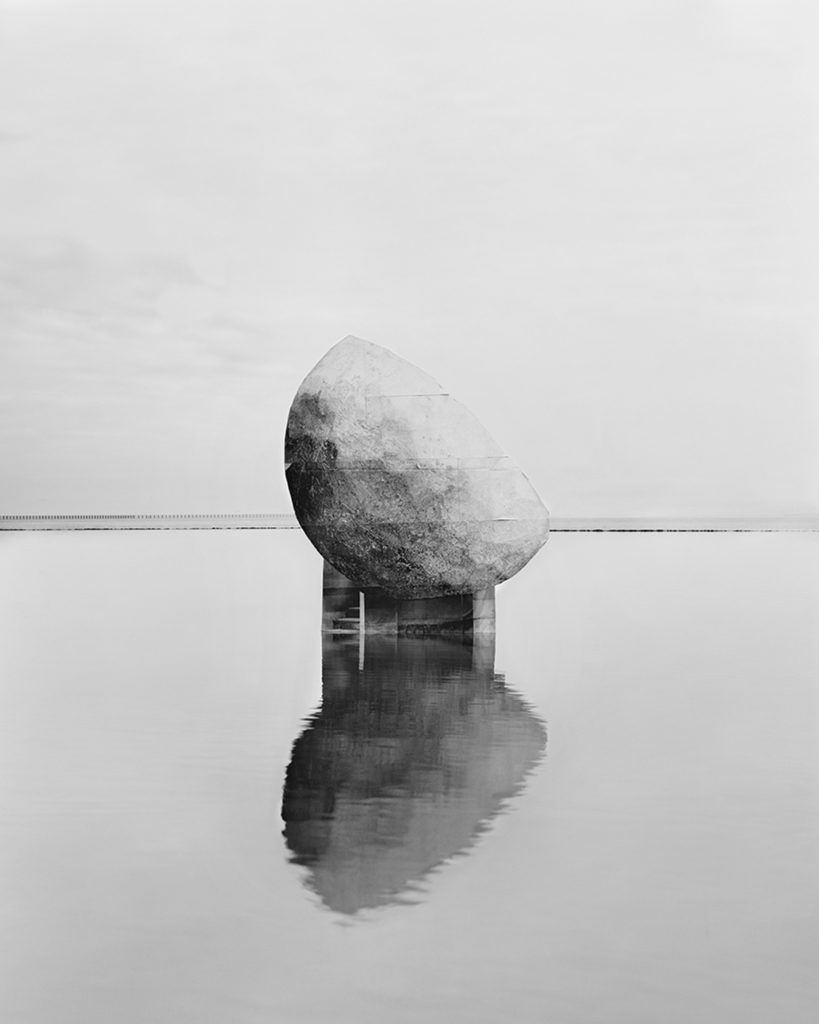

Noémie Goudal is a French artist who lives and works between Paris and London. In 2010 she graduated from the Royal College of Art and since then she has worked on many series.
In the Observatoires series, produced in 2013-2014, she shows many science fictional architectures in quiet landscapes. Her work is an encounter between realistic documentary images and dreamy illusions. Her work is inspired by images of German artists Bernd et Hilla Becher, whose interest is focused on industrial buildings and objective black and white photographs.
She has used methods that blend traditional photographic techniques with physical manipulation. What look like large, geometric structures set in barren landscapes are in fact two dimensional facades constructed from paper, which Goudal has photographed to appear ancient yet futuristic. The buildings are photographs of small scale architectural models that have been blown up, printed on paper, mounted on card and then set in the landscape. Though the images have a grainy, documentary feel to them, their content is an illusion. The paper constructions have fold lines and in some images, even the tape that holds the buildings together is visible.